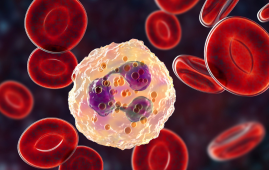

According to new research from the University of Pittsburgh published in the journal Physical Therapy, patients who seek physical therapy or chiropractic care first have better outcomes and shorter bouts of acute care for low back pain.
The findings reveal that the first point of entry into the health care system is associated with use and total cost of care in the following year for patients with acute bouts of low back pain. Nonpharmacologic and nonsurgical treatments are prioritized in clinical practice guidelines, however adherence to these standards has been low in the United States. Patients are frequently offered opioid pain medications or referred to specialists for procedures that do not address the underlying reasons of their pain, such as surgery, imaging, or steroid injections.
“Back and neck pain now account for the largest portion of health care spending in the U.S., followed closely by other musculoskeletal conditions,” said lead author Christopher Bise, Ph.D., UPMC physical therapist and assistant professor at Pitt’s School of Health and Rehabilitation Sciences. “Much of that spending does little to contribute to overall patient wellness.”
Bise and his colleagues discovered significant disparities in health care consumption based on where patients initially sought therapy for acute back pain relief by looking through over 30,000 patient records, largely from Pennsylvania and gathered between 2015 and 2018.
People who sought speciality care first (rheumatology, physiatry, or pain management) were in pain nearly twice as long as those who sought emergency care, chiropractic care, or physical therapy first. When total expenditures were compared, individuals who sought care through the ED or surgery paid nearly twice as much as those who sought care through chiropractic care or physical therapy.
Patients who sought care in the ED were also more likely to undergo expensive scans and injections. Furthermore, more than half of ED patients filled opioid pain medication prescriptions, compared to only 11% of persons who sought chiropractic care and physical therapy first.
Opioid prescriptions for low back pain have traditionally been a primary cause of the opioid crisis, according to the National Institutes of Health.
“Opioids and injections are, at best, Band-Aids for acute episodes of low back pain,” Bise said. “We need to flip the model on its head, prioritizing holistic wellness instead of simply treating the pain.”
Recognizing the need for a more collaborative approach to care, UPMC established the Program for Spine Health in 2019. Patients in the program get access to a health coach, dietitian, and pain psychologist in addition to physicians and physical therapists. Patients with the most severe illnesses and comorbidities are managed without the need of surgery, injections, or painkillers.
“Often, patients with low back pain end up spinning in the system, going from one specialist to another,” said Christopher Standaert, M.D., who directs the Program for Spine Health and who was not involved in the study. “Their care costs a tremendous amount of money, but they’re not getting any better.”
These findings show that new forms of spine care could benefit many people who suffer from low back pain.
“How do we get patients to the provider who can end the episode more quickly?” Bise asked. “Why aren’t physical therapists the primary musculoskeletal provider? Why aren’t we embedded in emergency departments? There are scattered models, but it hasn’t taken hold widely.”
more recommended stories
 Gestational Diabetes Risk Identified by Blood Metabolites
Gestational Diabetes Risk Identified by Blood MetabolitesKey Takeaways (Quick Summary for Clinicians).
 Phage Therapy Study Reveals RNA-Based Infection Control
Phage Therapy Study Reveals RNA-Based Infection ControlKey Takeaways (Quick Summary) Researchers uncovered.
 Pelvic Floor Disorders: Treatable Yet Often Ignored
Pelvic Floor Disorders: Treatable Yet Often IgnoredKey Takeaways (Quick Summary) Pelvic floor.
 Urine-Based microRNA Aging Clock Predicts Biological Age
Urine-Based microRNA Aging Clock Predicts Biological AgeKey Takeaways (Quick Summary) Researchers developed.
 Circadian Control of Neutrophils in Myocardial Infarction
Circadian Control of Neutrophils in Myocardial InfarctionKey Takeaways for HCPs Neutrophil activity.
 E-Cigarette Use and Heart Attack Risk in Former Smokers
E-Cigarette Use and Heart Attack Risk in Former SmokersKey Takeaways for Clinicians and Nurses.
 Ultramarathon Physiology: What HCPs Should Know?
Ultramarathon Physiology: What HCPs Should Know?Ultramarathon Metabolism: What Happens to the.
 High-Intensity Training and Oxidative Stress Insights
High-Intensity Training and Oxidative Stress InsightsNew Evidence Linking High-Intensity Training and.
 Sterilized Fermented Beverage for Obesity: New Evidence
Sterilized Fermented Beverage for Obesity: New EvidenceEarly Insights Into a Sterilized Fermented.
 36-Week Pre-eclampsia Screening May Reduce Term Risk
36-Week Pre-eclampsia Screening May Reduce Term RiskA New Preventive Strategy for Term.

Leave a Comment